Surrey Centre Elementary 24-25
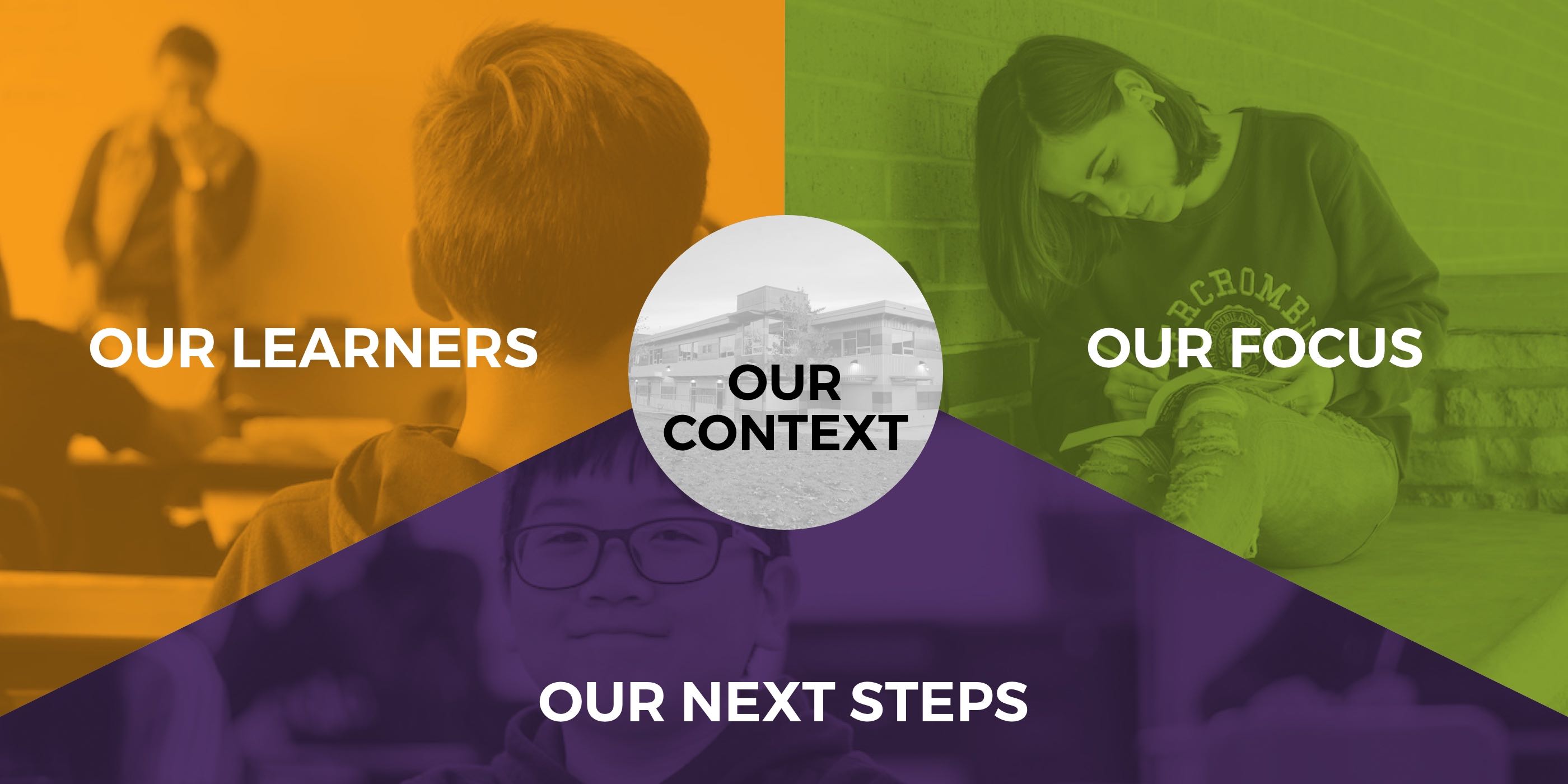

OUR CONTEXT
Our community is deeply connected to and acknowledges that we work, play, and learn on the traditional, ancestral, and unceded territory of the Katzie, Kwantlen, Semiahmoo, and other Coast Salish Peoples.
The Surrey Centre community prides itself on creating a safe, welcoming, and inclusive environment for all learners. When you walk through the main entrance, you are greeted by a beautiful mural in the shape of an eagle, featuring each of the four school buildings that have stood on this land. We build community by working together and honouring the diverse voices within it. One of the pillars of social-emotional learning is student voice, and it’s something we’re working to strengthen at Surrey Centre. Providing opportunities for students to share their ideas, preferences, and perspectives helps them feel seen, heard, and connected to their school.
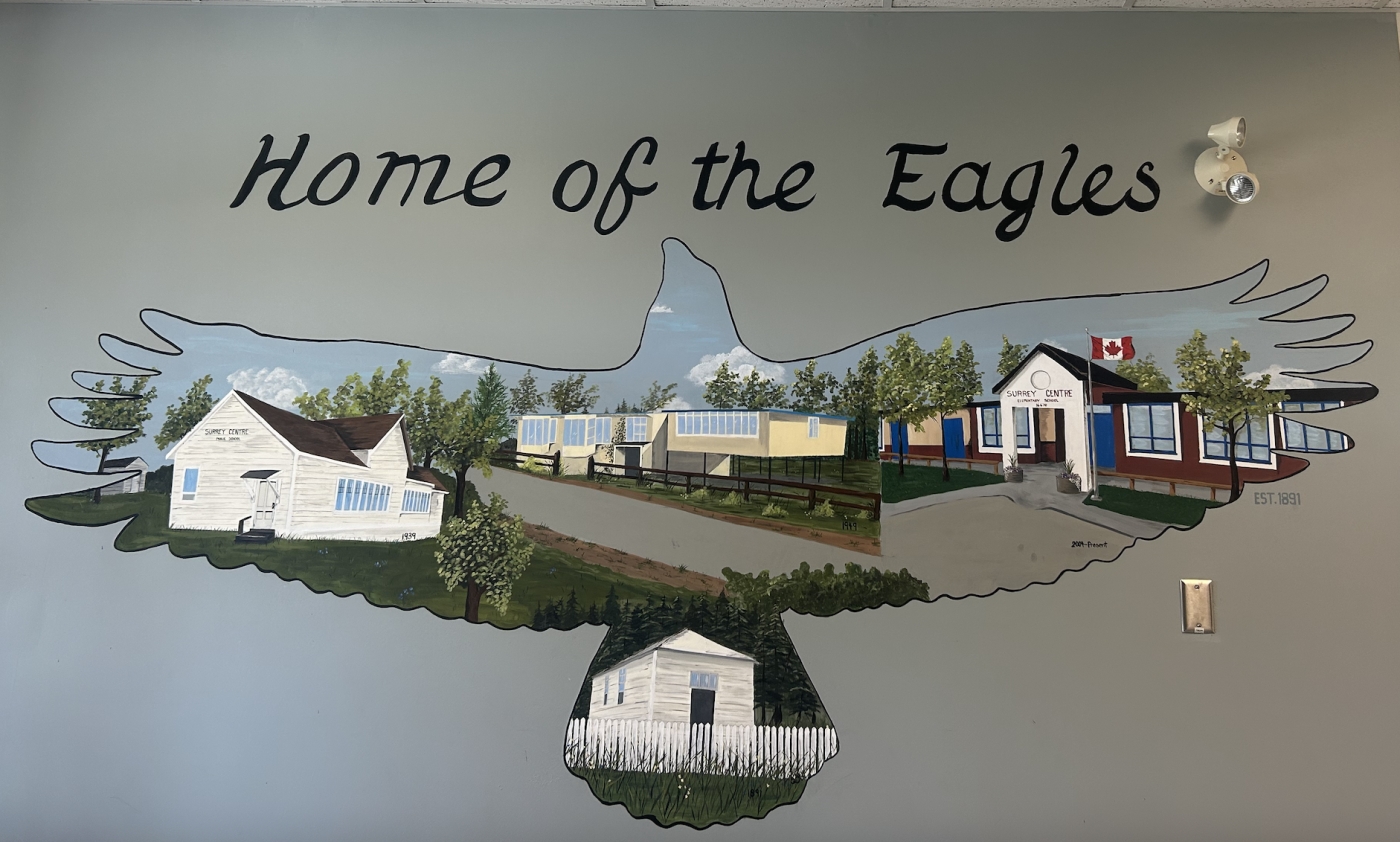
As part of our focus on connection and well-being, we have introduced a Garden Club where students help plan, plant, and care for our school garden. This project supports social-emotional learning by encouraging collaboration, responsibility, and mindfulness through hands-on, place-based learning. The garden has become a shared space where students can grow both plants and a sense of belonging.
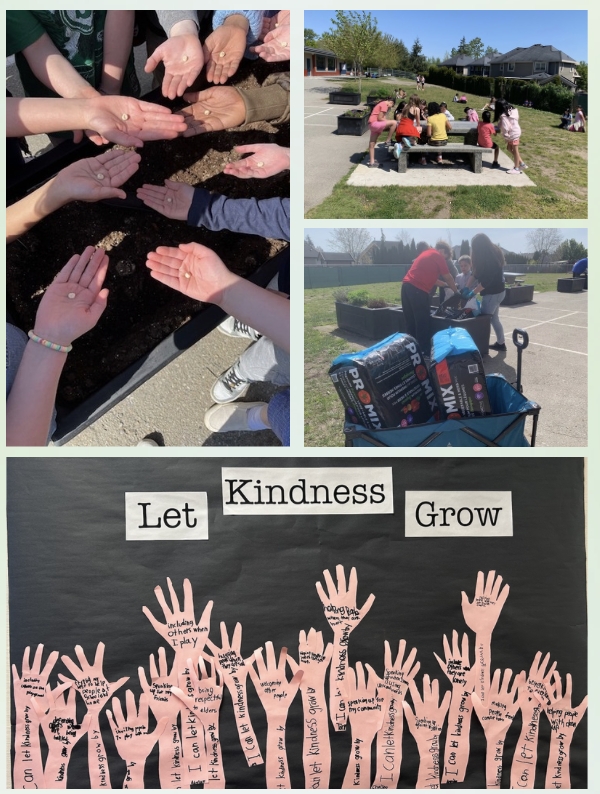
OUR LEARNERS
At Surrey Centre, we recognize that our learners are diverse, each bringing unique strengths, experiences, and ways of thinking to the classroom. We embrace this diversity and are committed to providing equitable access to mathematical learning, ensuring that every student has a meaningful entry point into numeracy and can actively participate in our learning community.
We believe that learning mathematics is a collaborative process, and our students thrive when they engage in rich mathematical discussions with peers, teachers, and families. By working together to explore patterns, solve problems, and make connections, students begin to see themselves as capable and confident mathematicians.
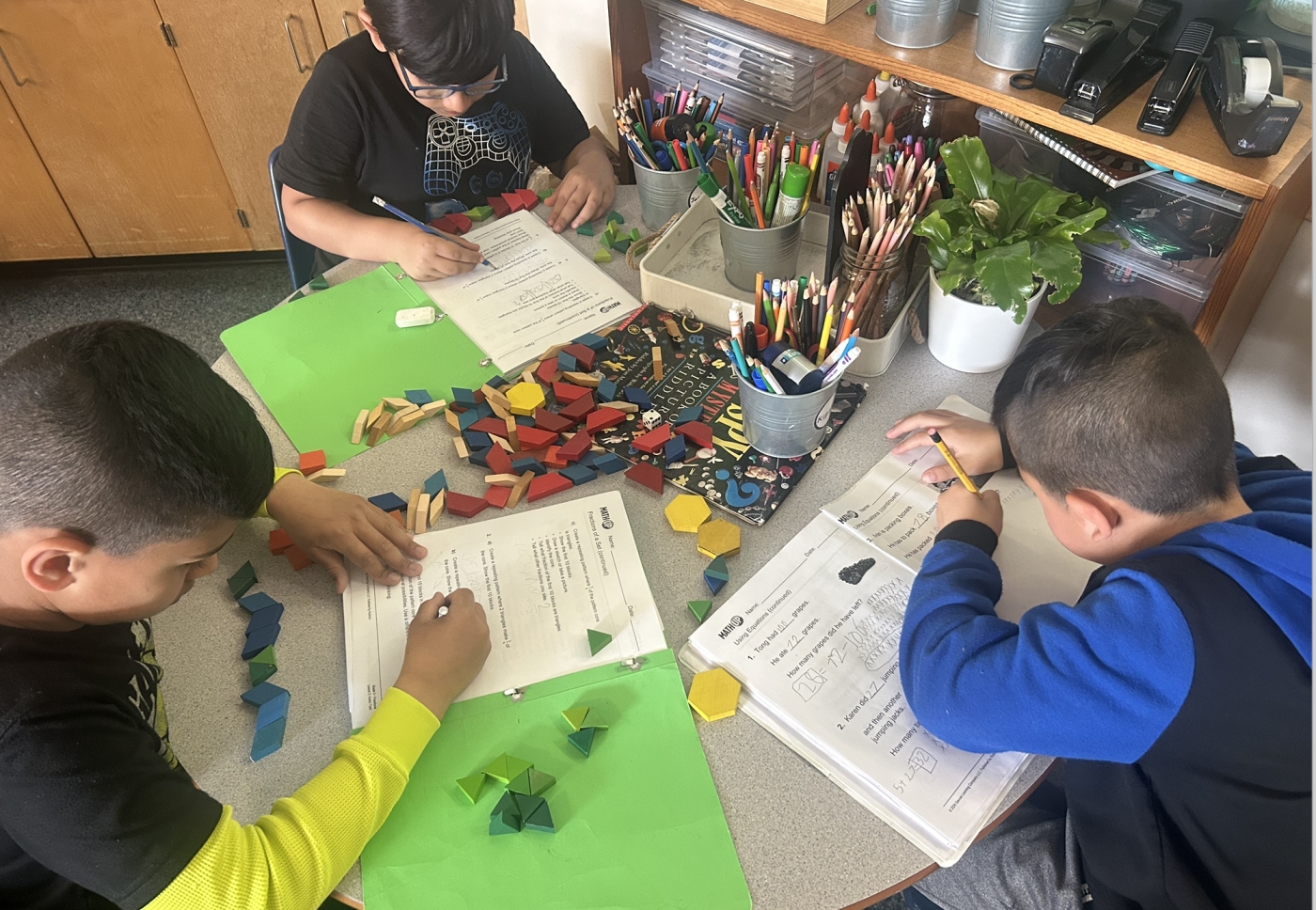
Our learners using manipulatives to make their thinking visible.
From the early years, our learners begin to develop an understanding that mathematics is more than numbers—it’s a way of thinking, reasoning, and communicating. At Surrey Centre, students engage in daily math learning experiences that emphasize problem-solving, reasoning, and reflection. They are encouraged to explain their thinking, try different strategies, and recognize that mistakes are part of the learning process.
Our learners understand that mathematical thinking develops through practice, exploration, and exposure to a variety of tasks. They know that we do math to solve real-world problems, to better understand the world around us, and to experience the satisfaction of finding solutions through perseverance and creativity.
OUR FOCUS
Students at Surrey Centre are Strengthening their Numeracy Skills. A cohort of Grade 6 and Grade 7 students was selected to represent the development of mathematical thinking at Surrey Centre.
Our students’ learning goals include:
Developing and applying multiple strategies to solve problems
Explaining and justifying mathematical ideas and decisions in many ways
Reflecting on their mathematical thinking
Each week, the cohort engages in hands-on math investigations and collaborative problem solving. Students explore strategies such as number talks, visual models, and math games to build reasoning, flexibility, and a deeper understanding of mathematical concepts. They are encouraged to try different approaches, learn from mistakes, and explain their thinking—moving beyond just finding the right answer.
These learning goals promote confidence, engagement, and a growth mindset. Students learn that mistakes are part of the learning process. Using tools like number lines, drawings, and mental math helps them understand the why behind the math. Talking through ideas and listening to others strengthens their ability to communicate clearly and think critically across subjects.
Students learned and used strategies that made math more interactive and meaningful by:
Explaining Their Thinking Collaboratively: Students used whiteboards and chart paper in small groups, taking turns with one marker to explain their thinking and build shared understanding.
Building Flexibility Through Peer Grouping: By working with different classmates in randomly assigned groups, students practiced collaboration, gained new perspectives, and developed stronger communication and problem-solving skills.
Solving Open-Ended Problems: Students used drawings, manipulatives, and discussion to explore rich math tasks, showing their thinking in multiple ways and reflecting on their reasoning.
What We Noticed
Students became more engaged and confident. They used a range of strategies, explained their reasoning clearly, and took risks—even when problems were challenging. We also saw stronger collaboration, with students supporting one another in meaningful ways.
At Surrey Centre, we are proud of the ways our students are growing as mathematicians—becoming more curious, capable, and confident in their thinking. Their voices, strategies, and reflections are at the heart of our work in building strong numeracy skills for lifelong learning.
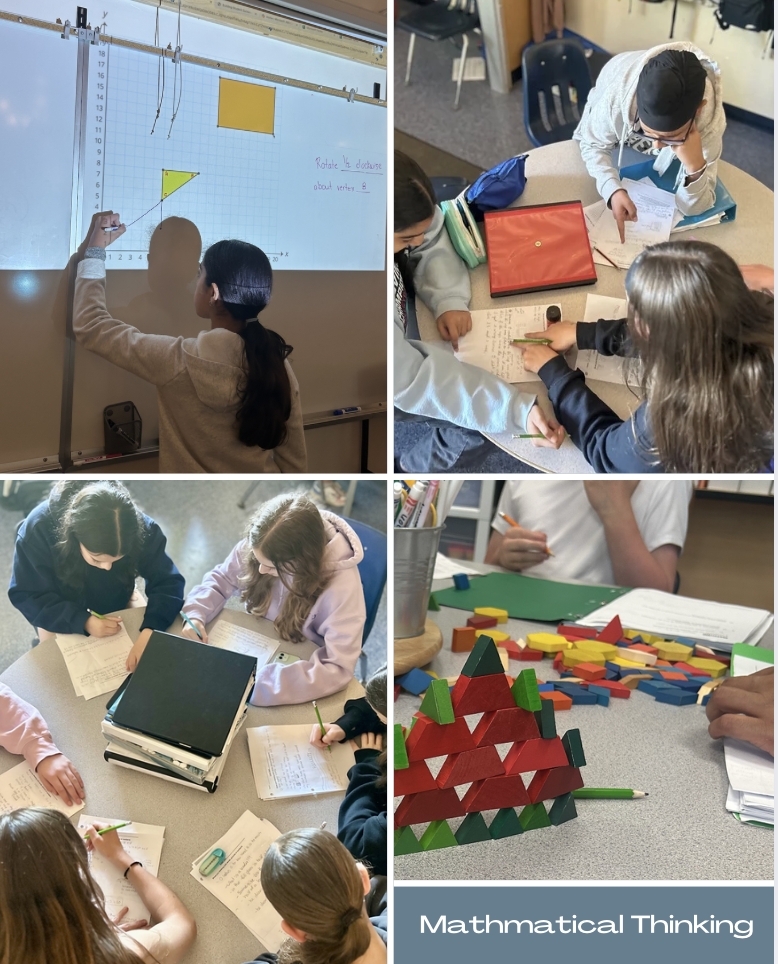
OUR NEXT STEPS
This year, our focus at Surrey Centre is helping students become flexible and confident problem solvers in math. We want students to understand that math is not just about getting the right answer—it’s about exploring different strategies, thinking critically, and learning from mistakes.
To support this, we will continue to provide clear instruction and engaging opportunities for students to work together and share their thinking. Our goal is for every student to build confidence, take risks, and develop strong mathematical habits that will help them now and in the future. Evidence gathered from our intermediate cohort demonstrates that our numeracy focus is positively impacting student learning. Using 3-Act Tasks—a problem-solving structure that promotes curiosity, estimation, and reasoning—students engaged in real-world math and developed greater confidence in communicating their thinking.
To further capture this growth, the first chart illustrates student progress using BC’s curricular language. In the competency of explaining mathematical thinking using multiple strategies, we observed a 30% increase in the number of students identified as “proficient,” rising from 60% in October to 80% in May. There was also a steady reduction in the number of students working at the “emerging” or “developing” levels.
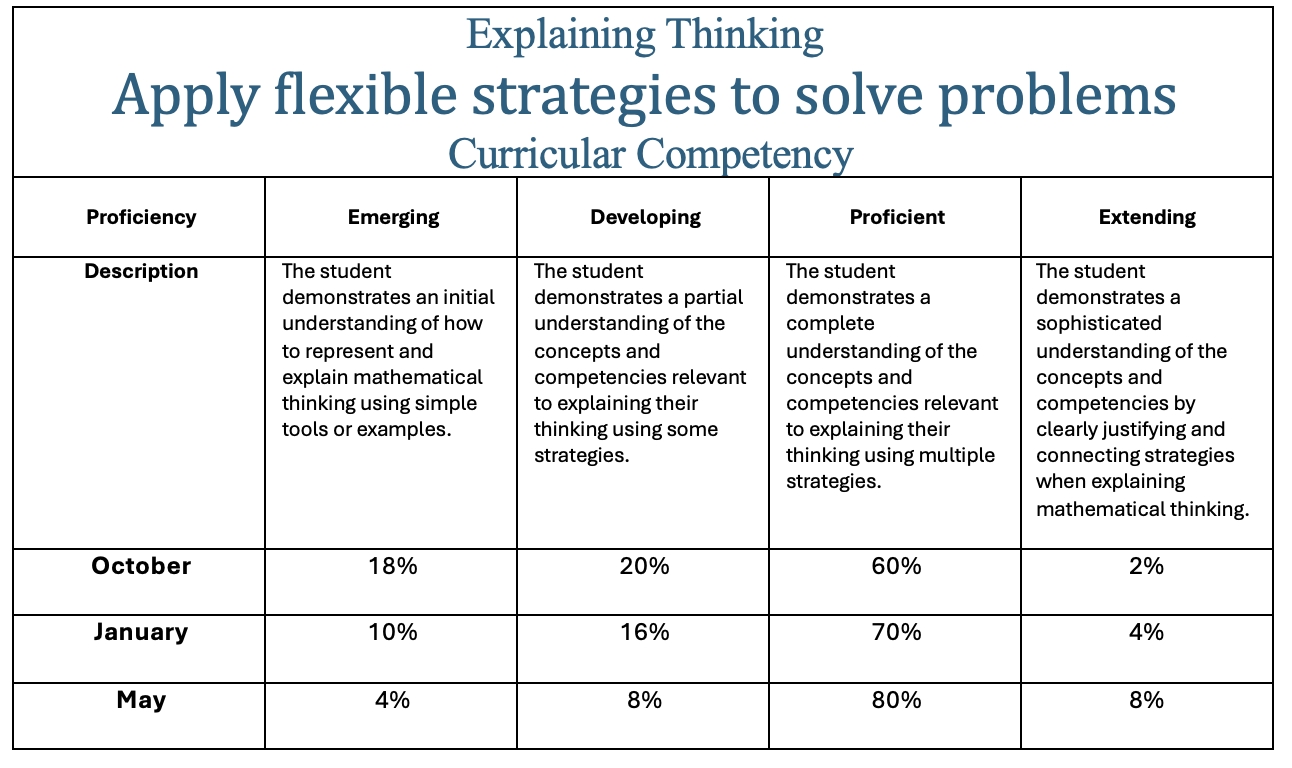
The chart below shows student progress over time through 3-Act Tasks, a problem-solving structure that promotes curiosity, estimation, and reasoning. In October, 60% of students were able to explain their thinking using more than one strategy (e.g., number lines, arrays, visual models). This increased to 70% by February and 80% by May. This growth reflects gains in flexibility, deeper reasoning, and the ability to clearly explain mathematical ideas.
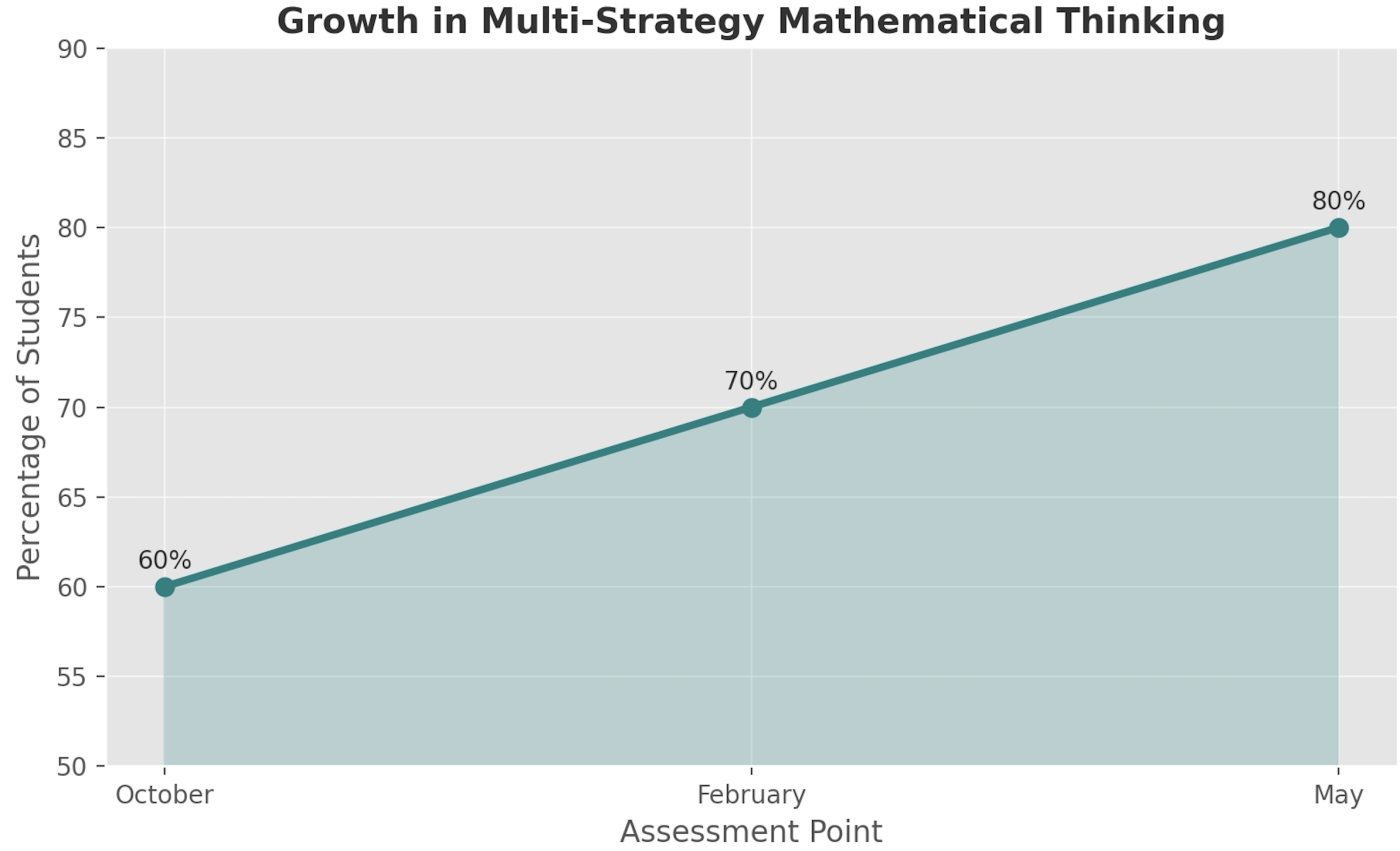
As a next step, we will continue to embed these problem-solving approaches across all intermediate classrooms and begin exploring ways to extend this work into the primary grades. We also plan to provide more opportunities for students to reflect on and communicate their mathematical thinking, supporting the development of metacognitive strategies and deeper understanding in math.
